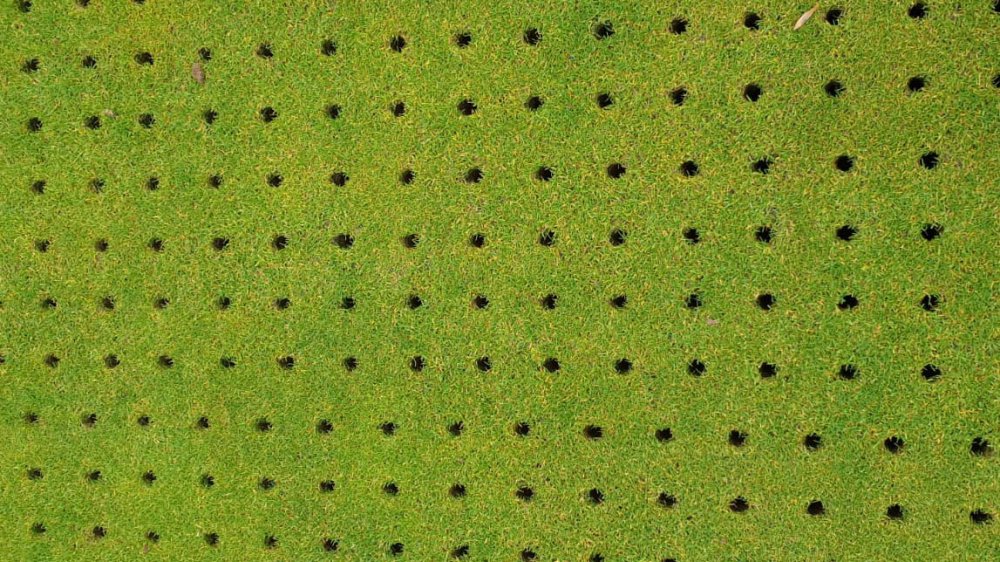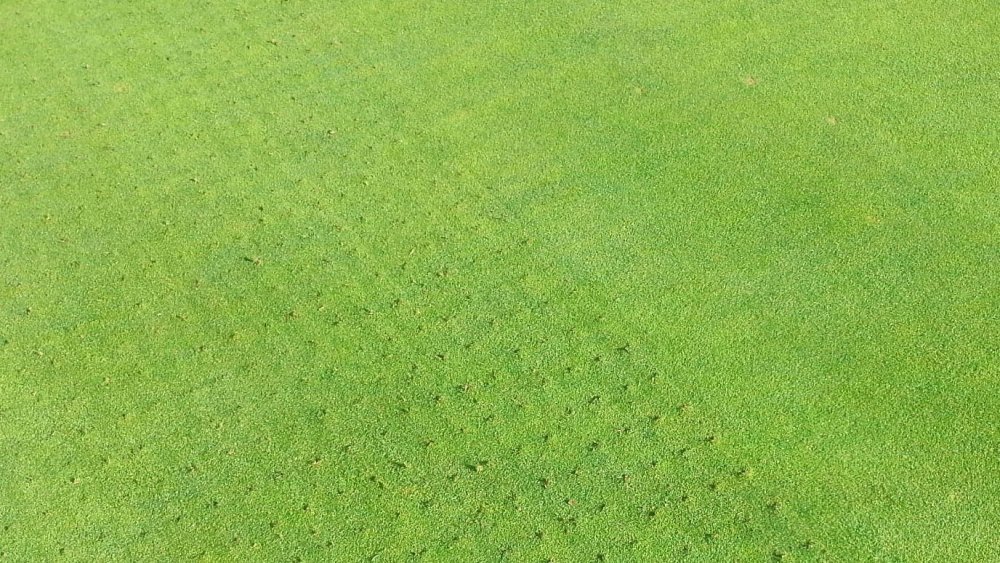Some decisions are as old as time: Coke or Pepsi, salty or sweet, hot dog or hamburger and pull a core or don't pull a core.
Disrupting the soil to relieve compaction and introduce oxygen to produce a better playing surface is as common in golf as placing a ball on a tee. But the decision to pull a core in the process or not is as varied as Titleist vs. Callaway.
Studies by some of the greatest minds in turf academia support both schools of thought, and researchers on either side of the debate are convinced the other side is wrong.
Although superintendents might choose one side of the fence or the other based initially on peer-reviewed research, they ultimately settle on hollow or solid tines based on one thing - if it works for them.
At Mountain Lake, a Seth Raynor design in Lake Wales, Florida, Tony Nysse says the pressures of a year-round golf season are too great to support a core-free cultural program.
"We pull cores here multiple times a year," Nysse said. "I am not of the school that enough topdressing and enough solid tining can keep up with 12 months of growth in Florida. I have seen many examples where clubs have tried right after a renovation and end up having to core several years later to get the greens back to performing to the expectations of their membership. We put down hundreds of inputs over the course of a year, so we also have to take the time to remove the spoils (thatch) of those efforts."
We have not pulled a core on our greens since 2013. . . Our organic matter levels on greens have remained in the 1.2-1.9 percent range since we began this practice. ~ Ryan Gordon
Nearly 3,000 miles away in San Francisco, Brian Nettz, CGCS, also sees golfers year-round at the Presidio Golf Club. Like Nysse, he opts for pulling cores to keep up with the rigors of a 12-month growing season.
"Definitely core," said Nettz. "Gotta bring up that microbe-rich subsoil, or what's the point?"
As a regional superintendent for U.S. Navy golf courses in California, Austin Daniells once agreed with the pull-a-core argument, and he still does — to a degree. He core aerifies fairways, but when it comes to managing putting surfaces, he's all about solid tining.
"If we're talking about greens, I have shifted over the last seven, eight years to only doing a solid tine aerification throughout the year," Daniells said. "Typically, we do a spring and fall larger tine aerification and a number of needle tine applications throughout the rest of the year. If I had the equipment, I would also deep tine greens a few times per year."
His shift in cultural practice philosophy is two-fold.
"I made the shift due to research," he said. "I have read, as well as through my own experiences and other input from superintendents in the area. I keep a very close eye on our nitrogen inputs as well as use some other products that help with the breakdown of organic matter which has helped to limit our organic matter accumulation."
Daniells oversees a host of daily fee, military courses in Southern California that see a lot of play, especially during the past two years, and his greens are standing up to the pressure.
"I felt like we were getting the same amount of sand into the holes with the solid tine versus the core aerification," Daniells said. "And the healing time was a little shorter."
Since its inception in 2005, the Boeing Classic, a PGA Champions Tour event, has been played at The Club at Snoqualmie Ridge in suburban Seattle is the site of The Boeing Classic. Little does defending champion Miguel Angel Jimenez, or any of the others pros who play there, realize that superintendent Ryan Gordon manages championship conditions, literally, without pulling a core.
"We have not pulled a core on our greens since 2013," Gordon said via email.
He says solid tining is less disruptive, which also promotes faster healing, but it also requires less labor and produces results good enough for the world's best players.
"Our organic matter levels on greens have remained in the 1.2-1.9 percent range since we began this practice," he said. "I consider anything under 3% to be ideal. That tells me that any thatch production is getting diluted sufficiently. Greens are firm, drain well and play fantastic. We also see much faster recovery and a higher amount of sand incorporation with this method vs. if we pulled a core. Not to mention, it is much less labor intensive and easier on equipment when solid-tining."
Gordon acknowledges that coring can be effective at helping manage fairy ring, which, he said, is a common practice at some Seattle-area courses, but the benefits are not enough to convince to go back to pre-2013.
"I have heard that some guys that deal with fairy ring, or root-borne diseases find that they have better turf health through the season when they pull a core," he said. "The theory is that by mixing the soils via coring, you are keeping the soil ecosystem in balance which allows for root-based disease pressure to be minimized.
"We deal with fairy ring on our fairways here and there, but I have found that it hasn't impacted turf health enough for me to want to switch back to the headache of coring."
If we're talking about greens, I have shifted over the last seven, eight years to only doing a solid tine aerification throughout the year.
With many superintendents firmly entrenched on one side or the other on the pull-a-core debate, one greenkeeper is rethinking his strategy, not based on scientific research but rather unscientific results on the golf course he manages.
Ryan Cummings at Elcona Golf Club in Bristol, Indiana, pulls cores on collars and tees, but has not extracted a plug from putting surfaces in six years.
That might soon change.
"I have not pulled a core on greens or fairways since 2016," Cummings said. "And even though I know all the research points to it not really mattering from a compaction standpoint, anecdotally I am seeing some slower percolation rates by - again, my possibly incorrect opinion - forcing that organic matter down and to the sides of the channel over time. My testing shows a slight uptick in organic matter, which could support my hypothesis.
"Next year, I will be pulling cores on fairways in the fall given what I believe is happening on my property, while solid tining in the spring to get the course in better condition sooner for play. I have not decided on greens yet besides using a three-quarter-inch Viper tine in June and July that pulls a core, but is quite simple to verticut and clean up."
Then there are some who alternate between coring and solid tining for a variety of reasons, including the time of year.
Iowa does not have the world's longest golf season, so making sure the golf course is ready by opening day is important for Rick Tegtmeier, CGCS at Des Moines Golf and Country Club. While solid or needle tining can result in faster recovery in the spring, pulling a core in the fall can help set the course up for the next season while also leading to some level of consistency beneath the surface.
"We do not pull a core in the spring; we do in the fall," Tegtmeier said. "We don't in the spring because of disruption to play (and) healing. We do in the fall . . . because of the high salt. It aids in the flushing process. We also have greens that (are at) varying stages in years. Coring allows us to get the same medium in those greens."




